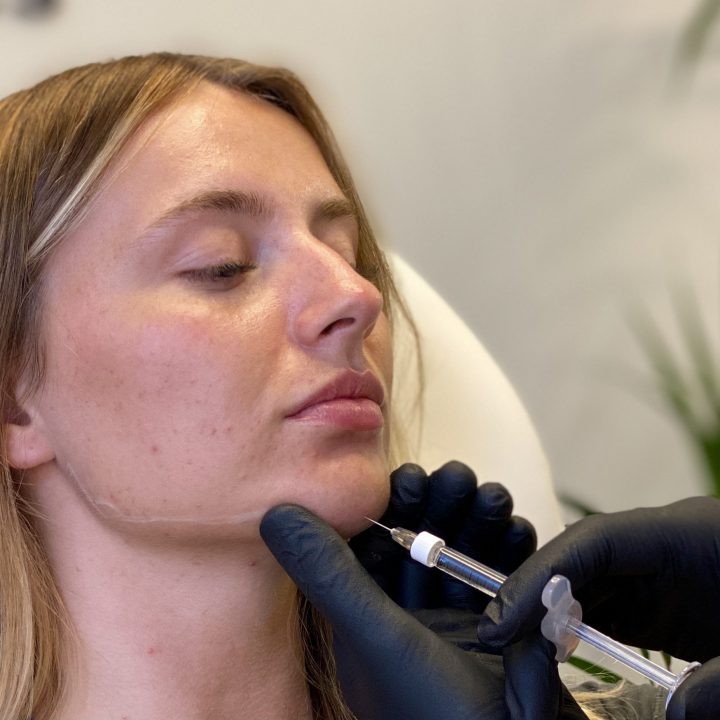Welcome to our blog post on how to safely remove Botox treatments! Whether you’re considering a fresh start or simply want to explore other options, we understand that sometimes, change is necessary. Botox treatments have gained popularity over the years for their ability to smooth out wrinkles and rejuvenate the skin. However, if you find yourself wanting to reverse the effects of your previous treatment, it’s important to approach removal with caution and seek professional guidance. In this article, we’ll walk you through everything you need to know about safely removing Botox treatments and share some helpful tips along the way. So let’s dive in and discover how you can gracefully bid farewell to your Botox journey!
What is Botox and why do people get it?
Botox, short for Botulinum toxin, is a neurotoxic protein produced by the bacterium Clostridium botulinum. While that might sound intimidating, Botox has become widely known as a cosmetic treatment used to reduce the appearance of fine lines and wrinkles. It works by temporarily paralyzing or weakening specific muscles in order to smooth out the skin and create a more youthful look.
So why do people choose to get Botox treatments? Well, aging is a natural process that affects us all. As we grow older, our skin gradually loses its elasticity and wrinkles begin to form. For some individuals, these visible signs of aging can have an impact on their self-confidence and overall well-being.
That’s where Botox comes in. Many people turn to this non-invasive procedure as a way to regain their youthful appearance without undergoing surgery or other invasive methods. By targeting specific areas such as forehead lines, crow’s feet around the eyes, and frown lines between the eyebrows, Botox injections can help achieve smoother and more relaxed-looking skin.
It’s not just about vanity either; some individuals also use Botox for medical reasons. The treatment has proven effective in treating various conditions like chronic migraines, excessive sweating (hyperhidrosis), overactive bladder issues, muscle spasms (such as cervical dystonia), and even certain eye disorders.
Whether it’s for aesthetic purposes or medical benefits – it’s important to note that Botox should always be administered by trained professionals who understand how to safely perform the procedure while minimizing potential risks. So before you go ahead with any treatment option or decide on removing your previous botox treatments – make sure you consult with a reputable professional who will guide you through the process!
The typical duration of a botox treatment
Botox treatments have gained immense popularity in recent years, thanks to their ability to reduce the appearance of wrinkles and fine lines. But how long does a typical botox treatment last? Well, the duration can vary depending on several factors.
On average, a botox treatment can last anywhere from three to six months. This is because the effects of botox gradually wear off over time as your muscles regain their natural movement. So while you may initially see noticeable results within a few days of your treatment, they will eventually fade away.
It’s important to note that everyone’s body reacts differently to botox injections. Some individuals may find that their results last longer than others. Factors such as age, metabolism, and lifestyle choices can all impact the longevity of your results.
If you’re considering getting a botox treatment, it’s essential to consult with an experienced professional who can tailor the procedure to meet your specific needs and desired outcome. They will be able to assess factors such as muscle strength and skin elasticity before determining the appropriate dosage for optimal results.
Remember that patience is key when it comes to seeing lasting effects from a botox treatment. While the initial effects may be visible right away, it takes time for them to fully develop and settle into place.
Common side effects of botox treatments
Common side effects of botox treatments can vary from person to person, but it’s important to be aware of the potential risks before undergoing the procedure. Some individuals may experience temporary redness or swelling at the injection site, which usually subsides within a few hours. Others might notice bruising around the treated area, although this typically fades within a week or two.
In some cases, patients may also experience mild headaches following their botox treatment. This is generally short-lived and can be managed with over-the-counter pain medication if necessary. It’s worth noting that these side effects are usually minor and resolve on their own without any intervention.
Less common but more serious side effects include muscle weakness or drooping in nearby areas of the face. Although rare, these complications should be reported immediately to your healthcare provider for further evaluation and possible treatment.
It’s important to remember that while side effects can occur with botox treatments, they are generally temporary and well-tolerated by most individuals. Nonetheless, it’s always best to consult with a qualified professional who can assess your specific situation and provide personalized advice based on your needs and medical history.
Risks associated with removing botox treatments
Removing botox treatments can come with certain risks and complications that individuals should be aware of. One of the main risks is the potential for uneven results or asymmetry in facial features. Since botox paralyzes muscles, removing it may cause some muscles to regain their full function while others remain partially paralyzed, leading to an imbalanced appearance.
Another risk is the possibility of developing bruising or swelling at the injection sites during removal. This is because removing botox involves injecting a solution into the treated areas to help dissolve and break down the toxin. While this process is generally safe, there is still a chance of experiencing temporary discoloration or puffiness.
In rare cases, more serious complications such as infection or nerve damage can occur when removing botox treatments. It’s important to choose a reputable professional who has experience in performing these procedures to minimize these risks.
Additionally, individuals considering removal should be aware that it may take time for the effects of botox to fully wear off once treatment has been reversed. Patience and understanding are key during this period as waiting for natural muscle movement and rejuvenation takes time.
While most people do not encounter significant issues when removing their botox treatments, it’s important to understand and acknowledge potential risks before undergoing any procedure.
Safe ways to remove botox treatments
If you’ve decided that it’s time to bid farewell to your botox treatments, there are safe and effective methods for removal. It’s important to note that removing botox is a delicate process that should be done by a qualified professional. Attempting DIY removal at home can lead to complications and potential risks.
One of the safest ways to remove botox treatments is through the use of injectable enzymes. These enzymes work by breaking down the botulinum toxin in the body, allowing it to naturally dissipate over time. A skilled healthcare provider will administer these injections under controlled conditions, ensuring safety and effectiveness.
Another option for removing botox is through the use of radiofrequency or laser treatments. These non-invasive procedures stimulate collagen production in the skin, helping reduce the appearance of wrinkles caused by botox injections. However, it’s essential to consult with a medical professional who specializes in aesthetic procedures before undergoing these treatments.
In some cases, massage techniques can also help speed up the fading process of botox effects. Gentle massaging around injection sites may improve blood flow and facilitate toxin breakdown within muscles.
When considering any method for removing botox treatments, it’s crucial to find a reputable professional who has experience in this specific area. Look for credentials such as board certification or membership in recognized aesthetic medicine organizations.
Remember that patience is key when dealing with reversing the effects of botox treatments. Results may not be immediate but should gradually improve over time with proper care and treatment.
Removing unwanted botox safely requires expertise and cautious consideration – never take matters into your own hands! Consult with professionals who understand this specialized field so you can achieve your desired results without compromising your well-being.
Tips for finding a reputable professional for botox removal
Finding a reputable professional to safely remove your botox treatments is crucial in ensuring the best possible outcome. Here are some tips to help you find the right expert:
1. Research and credentials: Start by researching professionals who specialize in cosmetic procedures and have experience with botox removal. Look for board-certified dermatologists or plastic surgeons who have undergone additional training in facial aesthetics.
2. Referrals and recommendations: Seek recommendations from friends, family, or trusted healthcare providers who may have had successful experiences with botox removal. Their firsthand accounts can provide valuable insights into finding reliable experts.
3. Online reviews: Check online platforms such as Google, Yelp, or RealSelf for patient reviews and ratings of different professionals in your area. These reviews can give you an idea of others’ experiences and satisfaction levels.
4. Consultations: Schedule consultations with multiple professionals before making a decision. During these appointments, ask about their experience, techniques used for botox removal, potential risks involved, and expected results.
5. Price versus quality: While cost is an important factor to consider, prioritize quality over price when it comes to choosing a professional for botox removal. Remember that this is your face we’re talking about – investing in someone experienced will likely yield better outcomes.
Remember that removing botox requires skill and expertise; therefore it’s essential to choose a professional who specializes in this procedure specifically.
Home remedies for fading the effects of botox
Home Remedy #1: Gentle Massage
One home remedy that may help fade the effects of botox is gentle massage. Using light pressure, you can gently massage the area where the botox was injected. This can help stimulate blood flow and encourage the breakdown of the botox molecules.
Home Remedy #2: Apply Cold Compresses
Another option is to apply cold compresses to the treated area. The cold temperature can help reduce inflammation and swelling, which are common side effects of botox treatments. Simply wrap an ice pack or a bag of frozen peas in a cloth and apply it to your skin for a few minutes at a time.
Home Remedy #3: Stay Hydrated
Drinking plenty of water is always good for your overall health, but it may also aid in fading the effects of botox. Keeping your body hydrated can support cell regeneration and promote healthy skin. Aim to drink at least eight glasses of water per day.
Home Remedy #4: Eat Foods Rich in Antioxidants
Incorporating foods rich in antioxidants into your diet may also be beneficial for fading botox effects. Antioxidants help fight free radicals, which can contribute to aging and damage to collagen fibers. Some examples include berries, leafy greens, nuts, and green tea.
Remember that while these home remedies may assist in fading the effects of botox treatments, they might not provide immediate results or completely reverse its effects. It’s always best to consult with a reputable professional for personalized advice on removing Botox safely and effectively.
Conclusion
In the quest for youthful and smooth skin, many individuals turn to Botox treatments. While these injections can offer temporary relief from wrinkles and fine lines, there may come a time when you decide it’s best to remove the effects of Botox. Whether you’re experiencing unwanted side effects or simply looking for a change, it’s important to approach Botox removal with care.
Removing Botox treatments should always be done by a trained professional who specializes in medical aesthetics. They will have the knowledge and expertise needed to safely reverse the effects of your previous treatment without causing harm or further complications. By seeking out a reputable professional, you can ensure that the process is performed accurately and effectively.
When searching for a provider for Botox removal in Phoenix, take your time to research different clinics or practitioners. Look for reviews and testimonials from previous clients to gauge their level of satisfaction with the results. Additionally, check if they are licensed and certified in administering Botox removal procedures.
While professional help is essential for safe botox removal, there are also some home remedies that may help fade its effects over time. These include applying ice packs or cold compresses on treated areas, massaging gently with warm water mixed with mild cleanser or moisturizer, eating anti-inflammatory foods like fruits and vegetables rich in antioxidants (such as berries), drinking plenty of water throughout the day which helps flush toxins out quickly from our system thus aiding faster healing process post procedure etc., Also avoiding excessive facial movements like squinting or frowning can prevent exacerbating any residual effects.
Remember that removing botox treatments requires patience as it may take several weeks before seeing noticeable results. It’s important not to rush into additional treatments during this period as doing so could cause further damage or complications.


















